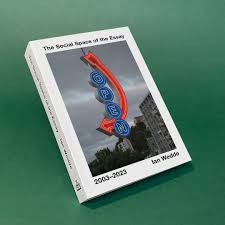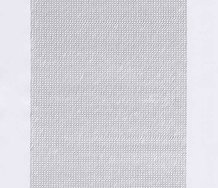Andrew Paul Wood – 25 July, 2024
What 'The Social Space of the Essay' is very good at doing is providing a snapshot of the anxious cultural discourse of the first two decades of the twenty-first century, as viewed from Aotearoa - though in fairness it isn't that far removed from the experience in Australia, the US, the UK and Europe in the late phase of neoliberalism: privatisation, deregulation, consumer choice, globalisation, free trade, monetarism, austerity, and funding cuts. A grim time that we seem to be revisiting in the present day.
Wellington
Ian Wedde
The Social Space of the Essay 2003-2023
Softcover 480 pp
Te Herenga Waka University Press 2024
RRP $50
I love collections of cultural writing. In Aotearoa these tend to be few and far between, seemingly fewer and farther the more sensitive to critique and intellectual disengaged society becomes. I was inordinately excited to learn of the existence of Ian Wedde’s new collection of essays, lectures and reviews, The Social Space of the Essay 2003-2023, from Te Herenga Waka University Press (the former Victoria University Press).
This is Wedde’s third collection of essays, the previous two being How to Be Nowhere, covering the period 1971-1994, and Making Ends Meet, covering 1992-2004. Prepare to be overwhelmed as this volume is no less diverse or wide ranging through the cultural landscape of Aotearoa.
Cultural analysis can take a variety of forms. In Aotearoa at one end of the spectrum are the cool, incisive, cerebral essays of Wystan Curnow. At the other are the emotionally engaged, chattier, no less erudite writings of Wedde. That isn’t a liability; it means they scratch different itches for the enquiring mind. The “social space of the essay” Wedde refers to in the title is discursive, the space created for, often casual, conversation - with other people, with works of art, with ideas - while still being a unique creative act. In Wedde’s case that social space is a convivial one. Wedde is ever good company.
It seems to me that Wedde has three modes: the poet (he is a noted poet and novelist), the journalist (his writing for the New Zealand Listener), and the professional (his writing on museum matters). He moves variously between the three, sometimes in the same piece of writing. All poets are, at heart, semioticians, which is probably why Roland Barthes comes to mind with Wedde’s pieces of writing on the photographer Peter Black.
In the book’s opening essay, “At Home in the Dark,” writing about Black’s photograph Christchurch, 1987, which first appeared in Sport, Wedde reads the image of a bicyclist in front of the Edmonds Baking Powder factory “sure to rise” sign as though it were every bit as deliberately contrived as a Baroque allegory:
The big drama in this otherwise phlegmatic story is the section of the Edmonds Baking Powder sign, ‘[SURE] TO Rise’ - the ‘sure’ hidden behind the man’s large, sure head, the ‘to rise’ rising on an optimistic gradient, in the dark, clear-cut silhouette against the dawn (evening) sky, from the man’s mouth. … He is sure, he’s swallowed the word, and the ‘to rise’ rises from the front of his serious breath, like a miraculous utterance, like a call to prayer.
Was any of this on Black’s mind when he snapped the shutter? Who knows? Probably not, intentionality be damned. Does it, strictly speaking, matter? I think not. Everyone is entitled to their own interpretation of a work of art and a good work of art should be open enough to sustain that. One work of art births another, and that’s what is important in this deft little exercise in Foucauldian archaeology. It is the conversation with the photograph and the unique creative act that matter.
Much the same can be said of the dense semiotic gallop that is Wedde’s essay on Bill Hammond, for the book Look This Way: New Zealand Writers on New Zealand Artists (2007), which manages to pack an extraordinary amount of information into a relatively short space. To be fair, this is one of the examples where in the conversation of the social space of the essay, it’s Wedde doing most of the talking - a snippet of biographical fact that unfolds and unrolls into a breathless, extemporaneous tsunami of whatever comes into Wedde’s head, followed, by another, followed by another.
This might be considered an indulgence in other writers less informed about the artist and the art, but Wedde is not one of those and I recommend just clinging to your surfboard and enjoying the ride as a sort of aesthetic experience. It’s not mere scholarly drag, Wedde knows his onions and it is impossible to read any of these essays without sensing the powerful intellect, breadth of experience and scholarship, and gift for language behind them. Wedde was ever all over the place like the mad woman’s proverbial, and that’s not a criticism. His enthusiasm for ideas is infectious.
If there is a disappointment for me, it’s the museological essays. It will be remembered that Wedde, not without controversy, worked at Te Papa for a decade as arts project manager, doing much to develop the national museum’s visual and national identity.
The issue for me is that while Wedde’s discursive, impressionistic stream-of-consciousness enjambment works wonderfully when talking about an artwork or creative, it becomes a bit of a tangled bore when discussing institutional theoretics. In “Tuning the Museum: The Harmonics of Official”, first published in South Pacific Museums: Experiments in Culture (2006), the opening sentence could not be more banal, even back then:
National museums - especially national museums developed in the cultural environments created by neoliberal economics, proliferating virtuality and global social formations - are asked to mediate significantly tensioned and even conflicting remits.
This would have been considered singing to the choir when I was in the Massey University Museum Studies programme back in the late 1990s. Indeed, you could probably say that of almost any cultural, educational or media entity either side of the millennium. Basically, it’s an overly-elaborate way of saying that a national museum in a liberal capitalist democracy (like ours) has to be all things to all people.
The problem is that thereafter Wedde cannot untangle himself from professional word salad or maintain a clear line of argument. Like a magpie he gets distracted by all the shiny intellectual trinkets, and it’s not until about halfway through he starts talking about his own experiences with Te Papa. More easily digested and enjoyed is “Pleasing Everybody - or Not: Museums and Civic Responsibility”, developed out of a 2008 lecture, which eschews the word salad and feels much more personal. In one sense such pieces are useful as a record of how far the discourse has come, but in hindsight, the more theoretical stuff seems like old hat, even for the time.
What The Social Space of the Essay is very good at doing is providing a snapshot of the anxious cultural discourse of the first two decades of the twenty-first century, as viewed from Aotearoa - though in fairness it isn’t that far removed from the experience in Australia, the US, the UK and Europe in the late phase of neoliberalism: privatisation, deregulation, consumer choice, globalisation, free trade, monetarism, austerity, and funding cuts. A grim time that we seem to be revisiting in the present day.
It is characteristic of Wedde, however, to play antic Harlequin and find the redeeming joy and hope in the grim. In the delightful bit of arts journalism “Action Man”, written for the Listener in 2004, Wedde recounts being stranded in New York on 9/11 and being given sanctuary by artist Max Gimblett and his wife Barbara Kirshenblatt-Gimblett. It’s a strong vignette of the artist in a broader discussion of what “home” means. But at the same time the infuriatingly scattershot disposable wordplay gets in the way. For example, Wedde casually calls Gimblett a “zen rapper” and while that sounds meaningful, feels meaningful, it’s such an overly packed portmanteau of cultural allusions it might as well be meaningless.
The piece on Anne Noble’s Antarctic photographs, “In the Blink of an Eye” (Ice Blink: An Antarctic Imaginary, 2011) delights as Wedde was able to draw on the background research for his novel Symmes Hole (1986), which he alludes to, but with puzzlingly coyness, or gentlemanly discretion, refrains from naming. Really though, I think I would have found that more interesting than his detour into Moby Dick. It’s Wedde’s relentless digressiveness that can, at times, make him a bit exhausting to read. Like the Bible, it’s a book to dip into, a sampler, not really something you can comfortably read from beginning to end in some kind of linear fashion.
These are all very minor cavils, though. The Social Space of the Essay is a wonderful collection, and Wedde is at his best at his most personal. At this point in his career it is, perhaps, unsurprising that some of the greatest pieces in the collection are the eulogies - Bill Culbert, Ralph Hotere, Bill Hammond, Allen Curnow among their subjects. It’s as if the form, the elegiac space, forces Wedde to slow down and engage more with the substance of his emotions. These pieces end up feeling a lot less low stakes and disposable than some of the other offerings. I think that is probably because he actually has something he really wants to say, rather than simply being a cultural doyen asked to participate. We see the wood, not the trees.
One of my favourite pieces of writing in the book, I think, is “A River Ran Through It” (2006), another piece for the Listener, which really are some of the best things in the book. Wedde is at his best when he’s not having to wear the white robes of the national cultural mandarin. It’s a lovely piece of personal journalism that takes us back to Wedde’s childhood in East Pakistan during a return visit to the country. Here is Wedde as emotional being, not laying out the feast of his intellectual and scholarly attainments and accompanying pop-cultural trivia. Wedde should slow down and stop to smell the flowers more often.
Andrew Paul Wood

 Advertising in this column
Advertising in this column Two Rooms presents a program of residencies and projects
Two Rooms presents a program of residencies and projects



This Discussion has 0 comments.
Comment
Participate
Register to Participate.
Sign in
Sign in to an existing account.